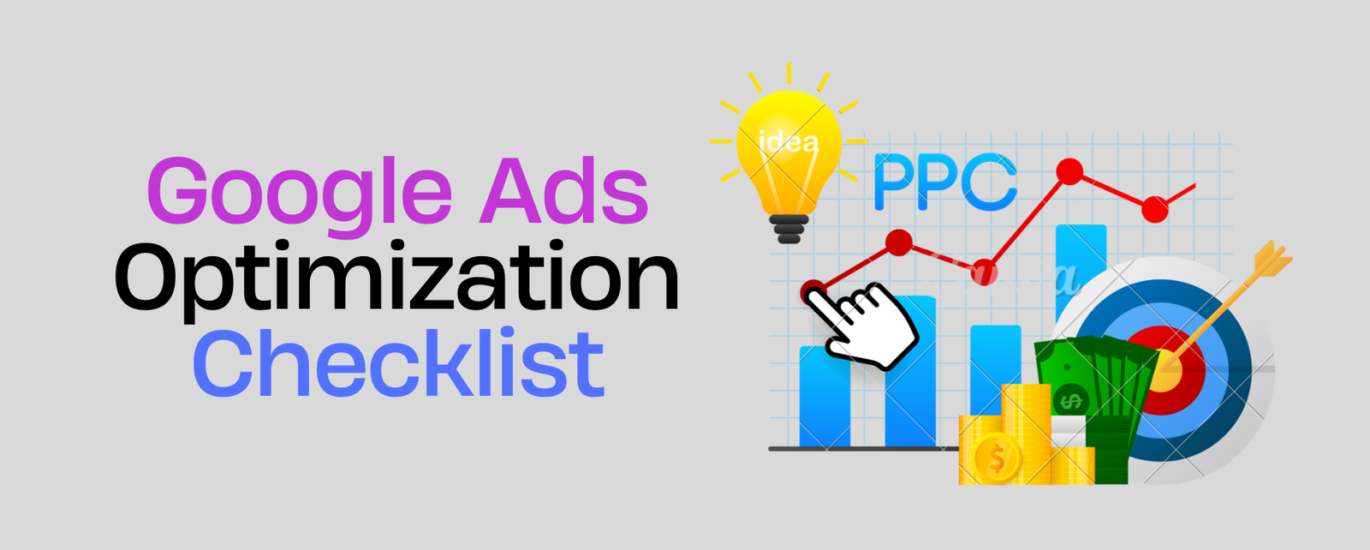Launching a Google Ads campaign is just the beginning. To truly maximize your return on investment (ROI), ongoing optimization is crucial. This checklist will guide you through every stage of your campaign, ensuring it reaches peak performance.
Pre-Launch Google Ads Optimization Checklist: Sharpen Your Tools
- Campaign Goals: Why are you running ads? Is it to generate leads, increase website traffic, or boost online sales? Clearly defined goals will guide your optimization efforts.
Example: Let\’s say your goal is to increase online sales for your shoe store.
- Keyword Analysis: Analyze existing keywords to see which ones are driving conversions and identify new high-performing opportunities. Use negative keywords to exclude irrelevant searches.
Stats: Studies show that well-researched keyword lists can improve click-through rates (CTR) by 15% or more [Source: WordStream].
- Ad Relevance: Ensure your ad copy directly relates to your targeted keywords and search intent. This improves ad rank and user experience.
Example: If your keyword is \”women\’s running shoes,\” your ad headline shouldn\’t be about men\’s dress shoes.
- Landing Page Readiness: Your landing page is where visitors convert. Make sure it\’s relevant to your ad copy, loads quickly, and is optimized for conversions.
Stats: Landing page optimization can increase conversion rates by up to 400% [Source: Unbounce].
Post-Launch Google Ads Optimization Checklist: Fine-Tuning for Success
- Performance Monitoring: Track key metrics like clicks, impressions, conversions, and cost-per-acquisition (CPA) regularly. Identify areas that need improvement.
Stats: 85% of Google Ads accounts don\’t track conversions, leaving them blind to campaign effectiveness [Source: WordStream].
- Bidding Strategies: Refine your bidding strategy based on your goals. Maximize conversions with target CPA or prioritize clicks with maximize clicks.
- Ad Copy A/B Testing: Test different variations of headlines, descriptions, and calls to action (CTAs) to see which ones resonate best with your audience.
Example: Test \”Shop Now\” vs. \”Get Your Perfect Fit\” as your CTA to see which drives more clicks.
- Negative Keyword Management: Continuously add negative keywords to prevent irrelevant searches from draining your budget.
- Audience Targeting Adjustments: Analyze how different demographics and interests perform. Refine your targeting to reach the most receptive audience.
- Extension Optimization: Test different ad extension combinations (sitelink, callout, location) to see which ones improve ad performance.
- Conversion Tracking Analysis: Ensure your conversion tracking is accurate to measure campaign effectiveness. Optimize landing pages for higher conversion rates.
- Budget Management: Allocate your budget effectively based on performance data. Focus spending on high-performing ad groups and keywords.
- Schedule and Device Bidding: Utilize dayparting to show ads during peak hours and device bidding to reach users on their preferred devices (mobile, desktop).
Stats: Studies show that using schedule bidding can improve conversions by up to 15% [Source: Search Engine Land].
- Remarketing Magic: Retarget website visitors who haven\’t converted yet with remarketing campaigns. This can significantly boost conversions.
Stats: Remarketing campaigns can deliver a 3x higher conversion rate compared to regular display advertising [Source: AdRoll].
- Competitor Research: Analyze your competitor\’s ad strategies. Adapt successful approaches while finding ways to differentiate your ads.
Continuous Optimization: Stay Ahead of the Curve
- Automated Reports: Set up automated reports to receive regular updates on campaign performance. This allows for proactive optimization.
- Schedule Reviews: Schedule regular campaign reviews to implement ongoing optimizations based on data insights.


